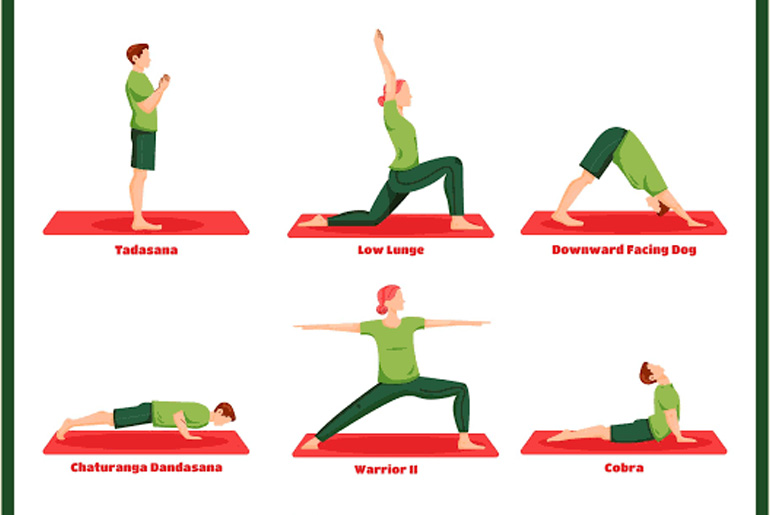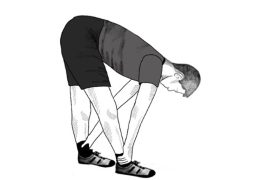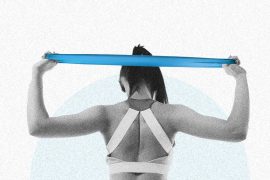Yoga asanas can be highly effective in addressing and correcting a hunchback, a condition often caused by poor posture or spinal misalignment. Key poses include Bhujangasana (Cobra Pose), which helps strengthen the back muscles and improve spinal flexibility; Dhanurasana (Bow Pose), which opens the chest and stretches the front of the body; and Setu Bandhasana (Bridge Pose), which strengthens the lower back and promotes better posture. Additionally, Ustrasana (Camel Pose) can enhance spinal extension and reduce stiffness. Regular practice of these asanas, combined with mindful breathing and proper alignment, can help correct a hunchback by improving posture and relieving spinal tension.
To address a hunchback or kyphosis through yoga, incorporating specific asanas can help improve spinal alignment, strengthen back muscles, and increase flexibility. Here are seven effective yoga poses for correcting a hunchback:
Child’s Pose (Balasana)
- Execution: Kneel on the floor, sit back on your heels, extend your arms forward on the mat, and lower your torso towards the floor.
- Benefits: This pose gently stretches the back and shoulders, which can help relieve tension and improve spinal alignment. It promotes relaxation and prepares the body for deeper stretches.
Cat-Cow Pose (Marjaryasana-Bitilasana)
- Execution: Start on all fours with wrists under shoulders and knees under hips. Inhale, arch your back and lift your head and tailbone (Cow Pose); exhale, round your back and tuck your chin towards your chest (Cat Pose).
- Benefits: This dynamic sequence increases spinal flexibility, strengthens the core, and stretches the back muscles. It helps improve posture by encouraging the natural curvature of the spine.
Cobra Pose (Bhujangasana)
- Execution: Lie face down on the mat, place your hands under your shoulders, and gently lift your chest off the ground while keeping your pelvis and legs on the floor.
- Benefits: Cobra Pose strengthens the lower back, stretches the chest and spine, and helps counteract the forward hunch by promoting proper spinal alignment.
Downward-Facing Dog (Adho Mukha Svanasana)
- Execution: Begin on all fours, then lift your hips up and back, forming an inverted V-shape with your body. Press your heels towards the floor and extend your arms forward.
- Benefits: This pose stretches the spine, hamstrings, and calves, while strengthening the shoulders and back. It encourages lengthening and alignment of the spine, which can help correct a hunchback.
Bridge Pose (Setu Bandhasana)
- Execution: Lie on your back with knees bent and feet flat on the floor. Lift your hips towards the ceiling and clasp your hands under your back.
- Benefits: Bridge Pose strengthens the back, glutes, and legs, and stretches the chest and spine. It helps to counteract slouching by promoting an open chest and aligned back.
Locust Pose (Salabhasana)
- Execution: Lie face down, extend your arms forward, and lift your chest, arms, and legs off the floor. Hold this position for a few breaths.
- Benefits: Locust Pose strengthens the upper and lower back muscles, which can help improve posture and reduce a hunch. It promotes stability and alignment in the back.
Extended Puppy Pose (Uttana Shishosana)
- Execution: Start in a tabletop position, walk your hands forward on the mat, and lower your chest towards the floor while keeping your hips above your knees.
- Benefits: This pose stretches the spine and shoulders, helps lengthen the back, and promotes flexibility in the thoracic spine, which is crucial for correcting a hunchback.
These yoga asanas—Child’s Pose, Cat-Cow Pose, Cobra Pose, Downward-Facing Dog, Bridge Pose, Locust Pose, and Extended Puppy Pose—work together to address a hunchback by stretching and strengthening the back muscles, improving spinal flexibility, and encouraging better posture. Regular practice of these poses can help correct spinal alignment issues associated with kyphosis, reduce tension, and promote overall back health.
Disclaimer:
The information contained in this article is for educational and informational purposes only and is not intended as a health advice. We would ask you to consult a qualified professional or medical expert to gain additional knowledge before you choose to consume any product or perform any exercise.







